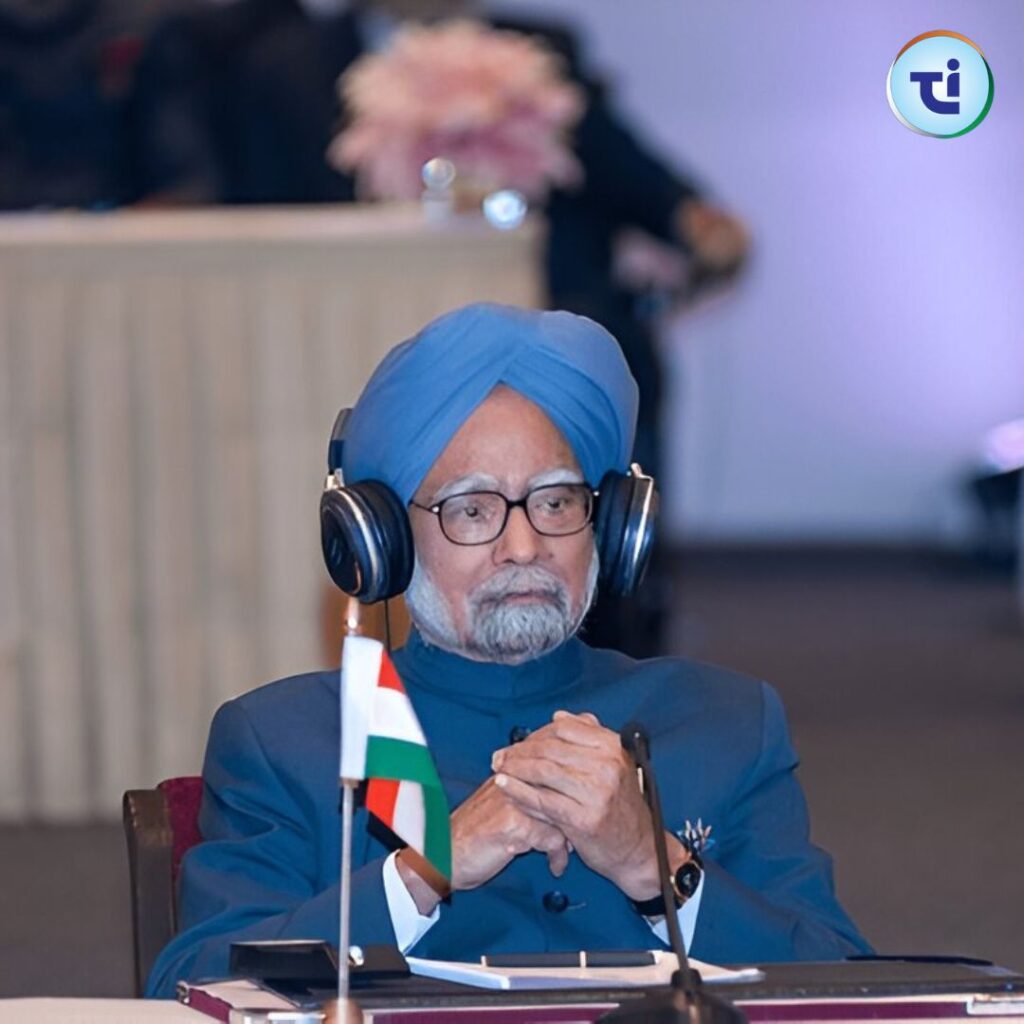Dr. Manmohan Singh is one of the most respected leaders in Indian politics, known for his integrity, intellect, and transformative economic vision. A globally acclaimed economist and a two-term Prime Minister of India (2004–2014), Singh’s journey from an academician to a statesman is a testament to his dedication to the nation. Often referred to as the architect of India’s economic liberalization, Dr. Singh left an indelible mark on the country’s economic and political landscape.
Early Life and Education
Born on 26 September 1932 in Gah, a small village in present-day Pakistan, Dr. Manmohan Singh’s early life was shaped by the Partition of India in 1947. His family migrated to India, settling in Amritsar, Punjab. Despite the challenges of displacement, Singh excelled academically. He completed his bachelor’s degree in Economics from Punjab University, Chandigarh, and later earned a master’s degree from the same institution.
Singh’s pursuit of knowledge took him to the University of Cambridge, where he studied Economics at St. John’s College. His academic brilliance earned him another prestigious opportunity – a D.Phil in Economics from the University of Oxford. His education laid a solid foundation for the economic reforms he would later pioneer.

Academic and Professional Career
Before stepping into the world of politics, Dr. Singh built a distinguished academic and bureaucratic career. He served as a professor at the Delhi School of Economics and later joined the United Nations Conference on Trade and Development (UNCTAD). His expertise in economics and finance made him a natural choice for key positions in the Government of India.
He went on to hold several significant posts, including:
- Chief Economic Adviser, Ministry of Finance (1972–1976)
- Governor of the Reserve Bank of India (1982–1985)
- Deputy Chairman, Planning Commission (1985–1987)
- Economic Adviser to the Prime Minister (1990–1991)
However, it was in 1991, during one of India’s most severe economic crises, that Singh’s leadership came into the spotlight.
The Economic Reforms of 1991
In 1991, India was facing a major balance-of-payments crisis, with foreign exchange reserves barely enough to cover a few weeks of imports. At this critical juncture, Prime Minister P.V. Narasimha Rao appointed Dr. Manmohan Singh as Finance Minister. Singh’s policies marked a historic turning point in India’s economic history.
The 1991 Economic Liberalization Reforms included:
- De-licensing of industries to encourage entrepreneurship
- Reduction of import tariffs to promote global trade
- Privatization of public sector enterprises to improve efficiency
- Deregulation of markets to enhance competitiveness
- Encouraging foreign investment in key sectors
These reforms dismantled the “License Raj” and opened the Indian economy to globalization. Though initially controversial, they laid the groundwork for decades of economic growth.
Political Journey and Rise to Prime Minister
While Dr. Singh was not a career politician, his reputation for honesty and efficiency earned him respect across political lines. He became a member of the Rajya Sabha in 1991 and represented Assam for several terms.
In 2004, when the Congress-led United Progressive Alliance (UPA) won the general elections, Sonia Gandhi, the Congress president, declined the post of Prime Minister and instead nominated Dr. Manmohan Singh. This decision marked the first time in Indian history that a Sikh became the Prime Minister.
First Term as Prime Minister (2004–2009)
During his first term, Dr. Singh focused on economic growth, social welfare, and foreign relations. Key achievements included:
- High GDP growth rate averaging around 8%
- Introduction of the National Rural Employment Guarantee Act (NREGA)
- Expansion of Right to Information (RTI) Act
- Strengthening relations with the United States through the India–US Civil Nuclear Agreement
- Major investments in infrastructure, education, and rural development
Dr. Singh was often praised for maintaining a stable coalition government while pushing forward reforms that balanced economic growth with social equity.
Second Term as Prime Minister (2009–2014)
The UPA returned to power in 2009, making Dr. Singh the first Prime Minister after Jawaharlal Nehru to be re-elected after completing a full five-year term. His second term saw a mix of achievements and challenges:
- Launch of the Right to Education Act
- Expansion of healthcare schemes
- Steps to strengthen India’s position in the G20 and BRICS
- Efforts to enhance energy security through global partnerships
However, this period was also marred by corruption scandals such as the 2G spectrum case and the Commonwealth Games controversy, which damaged the government’s image despite Singh’s personal reputation for integrity.
Leadership Style and Personality
Dr. Manmohan Singh’s leadership style was often described as calm, soft-spoken, and consensus-driven. He was not a populist leader but a policy-oriented statesman who preferred results over rhetoric. His humility, combined with deep knowledge, earned him admiration both in India and abroad.
Internationally, Singh was recognized as one of the world’s most respected leaders. Former US President Barack Obama once called him a man of “great wisdom and decency.” His ability to maintain cordial relations with major world powers helped strengthen India’s global standing.
Awards and Honors
Dr. Singh’s contributions have been acknowledged worldwide. Some of his notable awards include:
- Padma Vibhushan (1987) – India’s second-highest civilian award
- Euromoney Award for Finance Minister of the Year (1993)
- Indira Gandhi Prize for Peace, Disarmament, and Development (2017)
- Honorary degrees from several prestigious universities including Oxford and Cambridge
Life After Politics
After his tenure as Prime Minister ended in 2014, Dr. Singh returned to a quieter life, focusing on academic work, writing, and mentoring young leaders. He continues to serve as a member of the Rajya Sabha and remains an influential voice on economic and political issues.
Legacy
Dr. Manmohan Singh’s legacy is defined by two major contributions:
- Economic Reforms – His 1991 liberalization policies transformed India into one of the fastest-growing economies in the world.
- Ethical Leadership – Despite political pressures and controversies, Singh maintained a reputation for honesty, dignity, and intellectual depth.
While some critics argue that he was not assertive enough in dealing with political challenges, supporters emphasize that his steady and pragmatic leadership helped India navigate complex economic and diplomatic situations.
Conclusion
Dr. Manmohan Singh’s journey from a small village in Punjab to the highest office in India is a remarkable story of perseverance, intellect, and service. An economist at heart and a leader by circumstance, he reshaped India’s economic landscape and demonstrated that politics can be driven by integrity and vision.
In an era where political discourse often values charisma over competence, Dr. Singh’s career stands as a reminder that quiet leadership, grounded in knowledge and humility, can bring about profound change. His contributions will continue to inspire economists, politicians, and citizens for generations to come.





